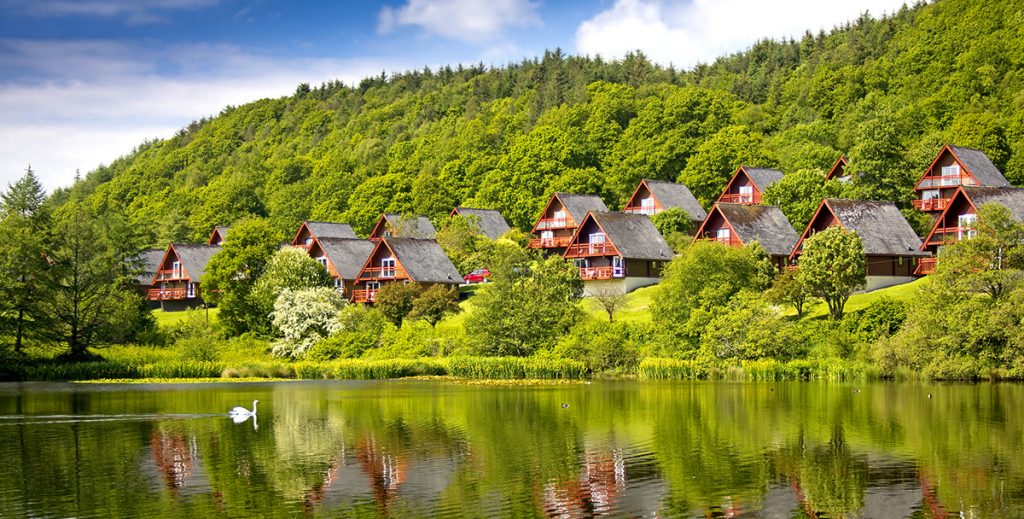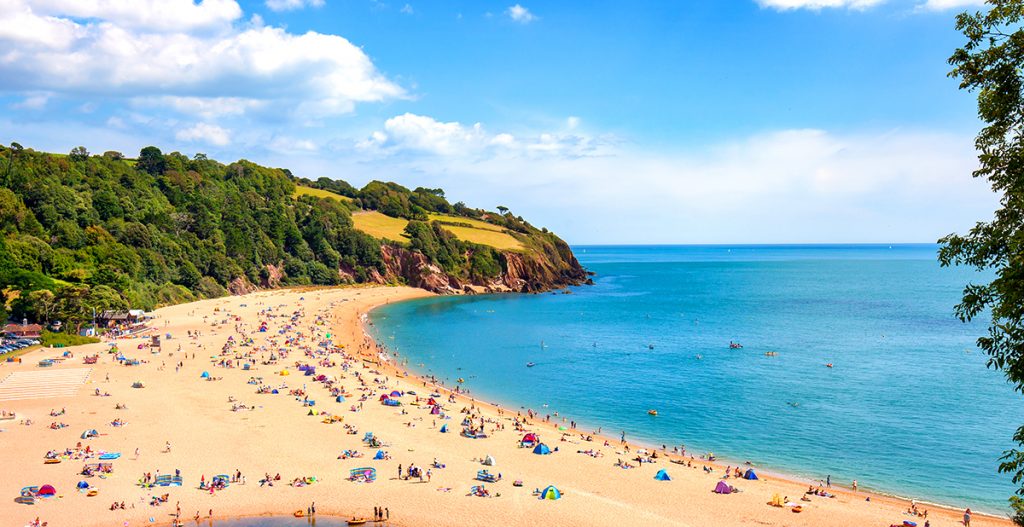How to Maximise Your Lead Generation: Marketing Plans for Holiday Parks
If you want potential guests to hear about your park and decide they want to book a holiday with you, marketing is vital. But beware. Launching marketing campaigns without forward planning is like commanding an army to charge all at once. It may earn you some victories, but you will achieve a lot more if you plan your attack and execute it in carefully considered stages.
That is what we are going to show you – how to create a holiday park marketing plan that will maximise the lead generation potential of your marketing efforts. We will then introduce you to methods for gathering data about your leads.

Marketing plans for holiday parks
Before you start using digital and traditional marketing to promote your park, you will want to set out what you aim to do in a marketing plan. Marketing plans are roadmaps that plot your marketing objectives, strategies and activities over a set period. Making one will allow you to prepare how you intend to stem challenges and capitalise on opportunities thrown up at certain times every year.
To create an effective holiday park marketing plan, follow these 7 steps:
- Set your objectives
Decide what you want your marketing efforts to achieve. Do you want greater awareness amongst retirees? To increase bookings for the Christmas period? Whatever your objectives are, make sure they are achievable and that they tie into your overarching business goals. The SMART criteria is a useful framework to help you devise objectives.
2. Determine your KPIs
KPIs, or key performance indicators, are what you will use to measure the success of your marketing efforts. Form fill numbers, page views, subscription sign-ups, social media engagement, click-through rates, total leads created – these are all examples of metrics you can use to measure how effectively your marketing efforts achieved the objectives you set for them.
3. Identify who you are marketing to
Who are your potential guests? This might either mean one of the broad ‘types’ of people who holiday on your park already or a new demographic that you want to target. Whoever they are, to promote to these people effectively, you need to know what they are like. Their typical age range, locations, job titles, level of education and family size are all examples of details you should consider researching.
Once you know what your potential guests are like, you will have a better idea how your business can fulfil their holiday needs and how to communicate this through your marketing. You will also have a better idea of the types and subjects of marketing they will be most receptive to.

4. Decide what content you are going to publish
Now that you know what you want to achieve, how you are going to measure your overall success, and what your potential guests are like, you are ready to decide what marketing content you are going to publish.
Your digital marketing content might include blog articles, infographics, social media posts, marketing emails or PPC. For your traditional marketing content, your best choices are print adverts, brochures and direct mail. Think carefully about what sort of content your potential guests are most likely to see and engage with. It is a good idea to set KIPs for each type of content you decide to use so you can measure the success of each type independently.
5. Decide when you are going to publish
Once you know what, you need to choose when.
Let us put this into context. A marketing plan for a holiday park should cover 12 months at a time and be structured around the key annual holiday periods: Easter, summer, Christmas, school holidays and bank holidays. One objective that should always sit alongside your others is to secure the maximum possible number of forward bookings.
To achieve this, one quality you should note about almost all potential guests – people in general – is that they tend to plan and book holidays at certain times of year. Many people turn their attention to summer getaways during January as a way of shedding a ray of warmth into the cold, dark aftermath of Christmas and New Year celebrations. January is therefore a great choice of month in which to publish awareness stage content.
This content could be a social media post of pure azure skies, soft turquoise waves, and a few lucky sunseekers lounging on the golden sands that stench along the coast near your park. A print poster showing a round of cold ciders on their way to a table in your sun-drenched, flower festooned beer garden could also work well. You get the idea – anything that makes potential guests long for the special sunshine experience that your park offers during the summer months.

6. Set your budget
Estimate how much the implementation of your plan is going to cost. You can use the resulting figure to set a budget. Setting a budget will help you keep the reins on your spending and allow you to accurately measure the return you make on your marketing cost.
Do not scrimp. Work within the limits of your available resources but allocate funding as generously as you need to. Your marketing plan will only be effective if you have the means to implement it. Plan your marketing carefully and fund it properly, and your efforts and investments will pay dividends in the long run.
Costs can be cut by using free distribution channels such as social media. Used correctly and in the right context, these channels are very effective. But keep in mind that targeting your potential guests on channels they are likely to see and engage with is more important than pinching short-term pennies.
If you plan to use freelancers, hire permanent marketing staff, invest in specialist software, pay for PPC, or pay for printing, these costs will need to be accounted for by your budget.
7. Implement your plan
Delegate the work then keep an eye on your KPIs so you know how the work set out in your plan is performing. Store records of results so you can use them to tweak next year’s plan.
Flexibility
Marketing plans for holiday parks need to be flexible. If your plan is too rigid, under pressure it will snap. If your plan is clear, targeted, but flexible in that it has room for manoeuvre, then it should have the strength and adaptability to cope with sudden, unexpected changes.
Worldwide pandemics are a stretch even for the strongest marketing plans. But lesser disrupters –spells of bad weather, travel lockdowns, foot and mouth outbreaks – can and should be guarded against.

How to create leads
Once the awareness you have spread has stirred interest among your potential guests, you need to distil that interest into convertible leads. The process for doing this is called lead capture.
One way to convert your visitors into leads is with form fills. These range from small ‘subscribe now’ boxes where leads can enter their name and email address, to dedicated landing pages that often request those same details and more.
At the very least, you want to persuade visitors to submit their name and email address. As soon as you know a visitor’s name and how to contact them, they become a lead. When they become a lead, they jump one step further from being a potential guest to a paying one.
Information about the number of visitors to your website, what they do while there, where they came from and what type of electronic device they used to visit it can be gathered by specialist marketing software such as Google Analytics. This information is invaluable for learning about your potential guests and how they engage with your content. You can then fine-tune your marketing strategies accordingly.
All details and information you gather about your leads should be stored and managed in a content management system (CRM). As such, it is also vital that you follow General Data Protection Regulation (GDPR) rules and regulations.
Maximise your lead generation
If you want your marketing to operate at maximum lead generating efficiency, the information in this article will help you put together a robust holiday park marketing plan and create effective means of lead capture.
It is worth noting however, that the techniques described above take lots of practice to master. If you want to maximise your lead generation quickly and with minimal effort, it is best to seek help from skilled professionals. That help is at hand.
The Gold Standard Service
Michael Paul’s Gold Standard service is ready and waiting to provide you with a virtual back office staffed by a 17-strong team of UK holiday lettings experts.
The team includes industry specialist marketeers, marketing strategists, website builders, writers, and design professionals. All are poised to handle all areas of your business’s lead generation. If you wish, the service can also handle your customer services and revenue management.
All work produced by your Gold Standard virtual back office is done in your name, under your brand. You will be happy to know that our costs are guaranteed to be outweighed by what is likely to be £1000s in extra income that the service will earn for you.
To discuss how the Gold Standard Service will benefit your business,
Call Michael Paul on:
01275 371133
Or email him at:
michael@michaelpaulholidays.co.uk

3 replies on “How to Maximise Your Lead Generation: Marketing Plans for Holiday Parks”
[…] there is an important point to remember at this stage: for all the power of effective marketing, it has yet to replace word of mouth as the swiftest spreader of messages and the strongest […]
[…] of your business. High occupancy rates are solid indicators that you are doing a good job of attracting guests. To calculate your occupancy rate, divide your total number of occupied rooms by your total number […]
3lengthen